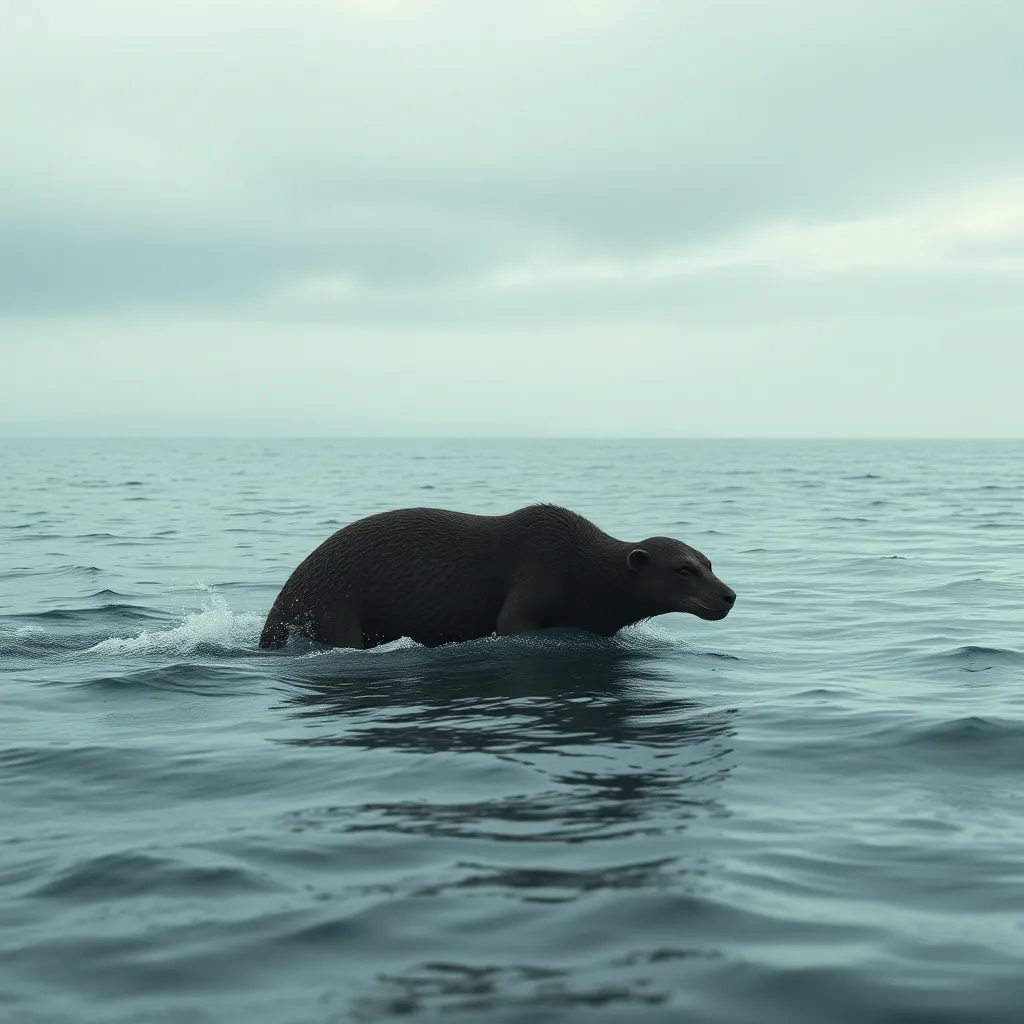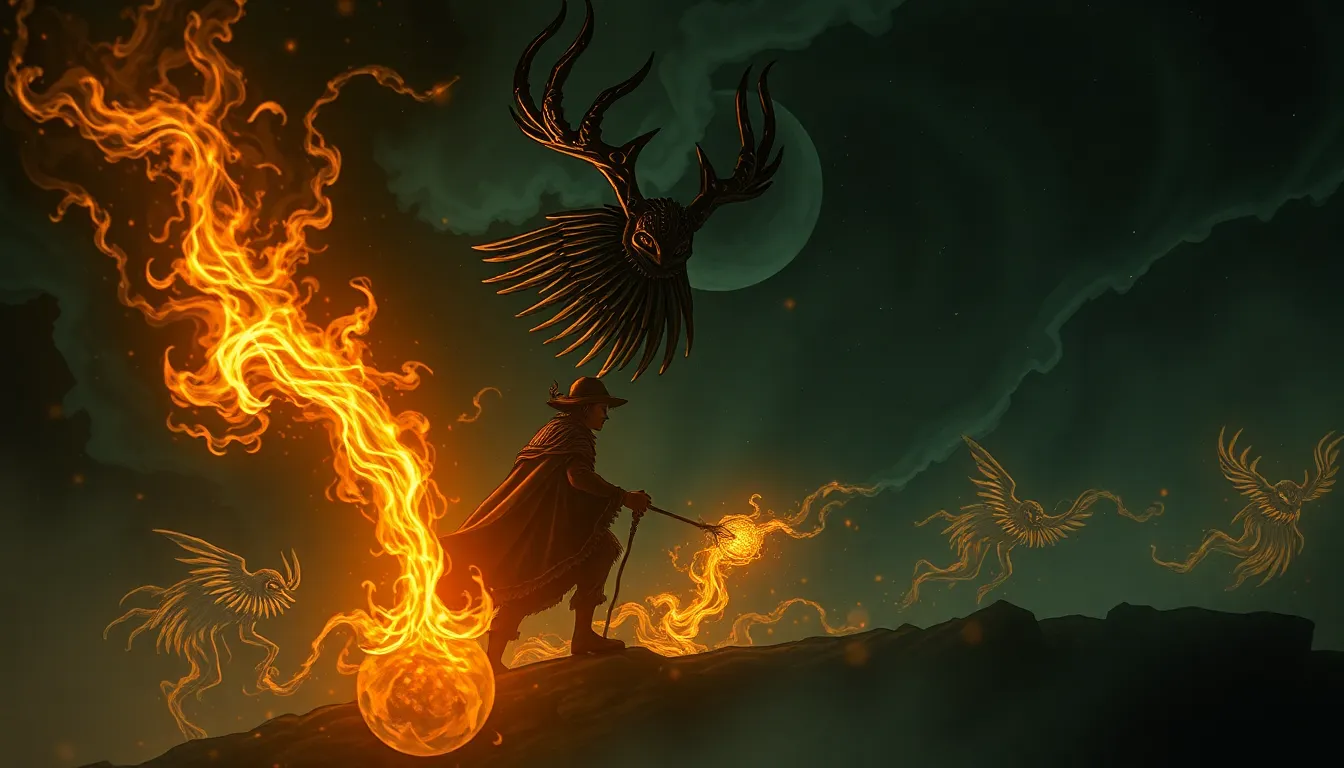The Selkie’s Quest: Examining the Journeys of Self-Discovery and Transformation in Selkie Myths
I. Introduction to Selkie Myths
Selkie myths, originating from the rich tapestry of Celtic folklore, tell enchanting tales of seal-human shapeshifters who navigate between two worlds—the sea and the land. These legends are deeply rooted in the cultures of Scotland, Ireland, and the Faroe Islands, reflecting the beliefs and values of the communities that tell them.
Through these stories, Selkies embody the themes of self-discovery and transformation, inviting audiences to explore the fluidity of identity and the deep connections between love, freedom, and the natural world. This article aims to delve into the complexities of Selkie myths, uncovering the layers of their significance in personal and societal contexts.
II. The Nature of Selkies
At the heart of Selkie legends is the captivating image of the Selkie—a creature that can shift between seal and human forms. Descriptions often depict them as beautiful beings who, when on land, shed their seal skins and take on human appearance, only to return to the sea when they don their skins again.
The symbolism of seals in maritime cultures is profound; they represent the mystery of the ocean, the unknown depths of the psyche, and the duality of existence. The Selkies embody this duality, illustrating the tension between the comforts of home and the call of the wild sea.
The Duality of Existence: Sea vs. Land
The Selkies’ existence highlights a significant theme in mythology: the struggle between two realms. This duality can be interpreted as a metaphor for the human experience, where individuals often find themselves torn between societal expectations and their true selves.
III. Key Themes of Self-Discovery in Selkie Tales
Selkie tales are rich with themes of self-discovery, particularly the search for identity. Many stories illustrate the internal conflicts faced by Selkies as they grapple with their dual nature—part human, part seal.
The Search for Identity
In many narratives, Selkies struggle to reconcile their human and Selkie selves. This struggle often manifests in their relationships with humans, leading to poignant explorations of love, choice, and freedom.
The Role of Choice and Freedom
The ability to choose between forms is a powerful motif in Selkie myths. The choice to remain on land or return to the sea often reflects deeper themes of autonomy and the longing for liberation from societal constraints.
The Influence of Love and Longing
Love plays a crucial role in the journey of self-discovery for Selkies. Their deep longing for human connection often compels them to make significant sacrifices, illustrating how love can both empower and constrain.
IV. Transformation as a Central Motif
Transformation is a central motif in Selkie stories, representing both physical and emotional change. The process of transformation in these myths is often depicted as both a gift and a curse.
The Process of Transformation
Selkies undergo transformation through various means, often dictated by love, loss, or the desire for freedom. Their ability to shift forms serves as a metaphor for personal growth and the quest for identity.
The Impact of Human Relationships
Human relationships significantly influence Selkie transformations. For example, in the tale of “The Selkie Wife,” a Selkie is captured by a fisherman who takes her skin, forcing her to live as his wife. This relationship highlights the complexities of love and the consequences of control over another’s identity.
V. The Role of Nature and Environment
Nature, particularly the sea, serves as a powerful symbol in Selkie myths. The ocean represents the unconscious, the unknown, and is often depicted as a place of both danger and solace.
The Sea as a Symbol
The sea’s vastness mirrors the complexities of the human experience. It is a place where Selkies find freedom, yet also a realm that calls them back, representing the duality of their existence.
Coastal Landscapes as Settings
Coastal landscapes play a vital role in these myths, serving as the backdrop for transformation. The juxtaposition of land and sea emphasizes the tension between two worlds and the emotional landscapes of the characters.
VI. Comparative Analysis with Other Mythical Beings
When examining Selkies, it is intriguing to compare them with other mythical shapeshifters, such as mermaids and werewolves. Each of these beings embodies themes of transformation and identity, though they manifest in different cultural contexts.
Similarities with Other Shapeshifters
- Both Selkies and mermaids are associated with the sea and possess the ability to transform.
- Werewolves share the theme of duality, representing the struggle between human nature and primal instincts.
Different Cultural Interpretations
Across various cultures, transformation and identity are interpreted through unique lenses, reflecting societal values and beliefs. While mermaids often symbolize seduction and danger, Selkies represent longing and the quest for belonging.
The Universality of Self-Discovery
Despite cultural differences, the themes of self-discovery resonate universally, allowing audiences to connect with these stories on a personal level.
VII. Modern Interpretations and Adaptations of Selkie Myths
In contemporary literature and art, Selkie legends continue to inspire new narratives. Modern adaptations often explore themes of feminism and empowerment, reinterpreting the roles of Selkies in a way that reflects current societal issues.
Contemporary Literature and Art
Authors and artists are increasingly drawing on Selkie myths to explore ideas of identity and transformation in today’s world. These modern retellings often resonate with themes of personal freedom and the struggle against societal norms.
The Role of Feminism
Many recent adaptations portray Selkies as empowered figures who reclaim their identities and challenge the constraints placed on them, reflecting a broader cultural movement toward gender equality and self-empowerment.
VIII. Conclusion: The Lasting Legacy of Selkie Myths
In conclusion, Selkie myths offer profound insights into the journeys of self-discovery and transformation. The key themes of identity, love, and the interplay of nature and human emotion resonate deeply with audiences across time and cultures.
The relevance of Selkie myths in today’s world is evident in their ability to speak to the ongoing journey of self-discovery that individuals continue to experience. As we navigate the complexities of our identities in an ever-changing world, the stories of Selkies remind us of the beauty and struggle inherent in the quest for authenticity.
Ultimately, the legacy of Selkie myths endures, inviting us to reflect on our own journeys of transformation and the ways in which love and freedom shape our identities.




